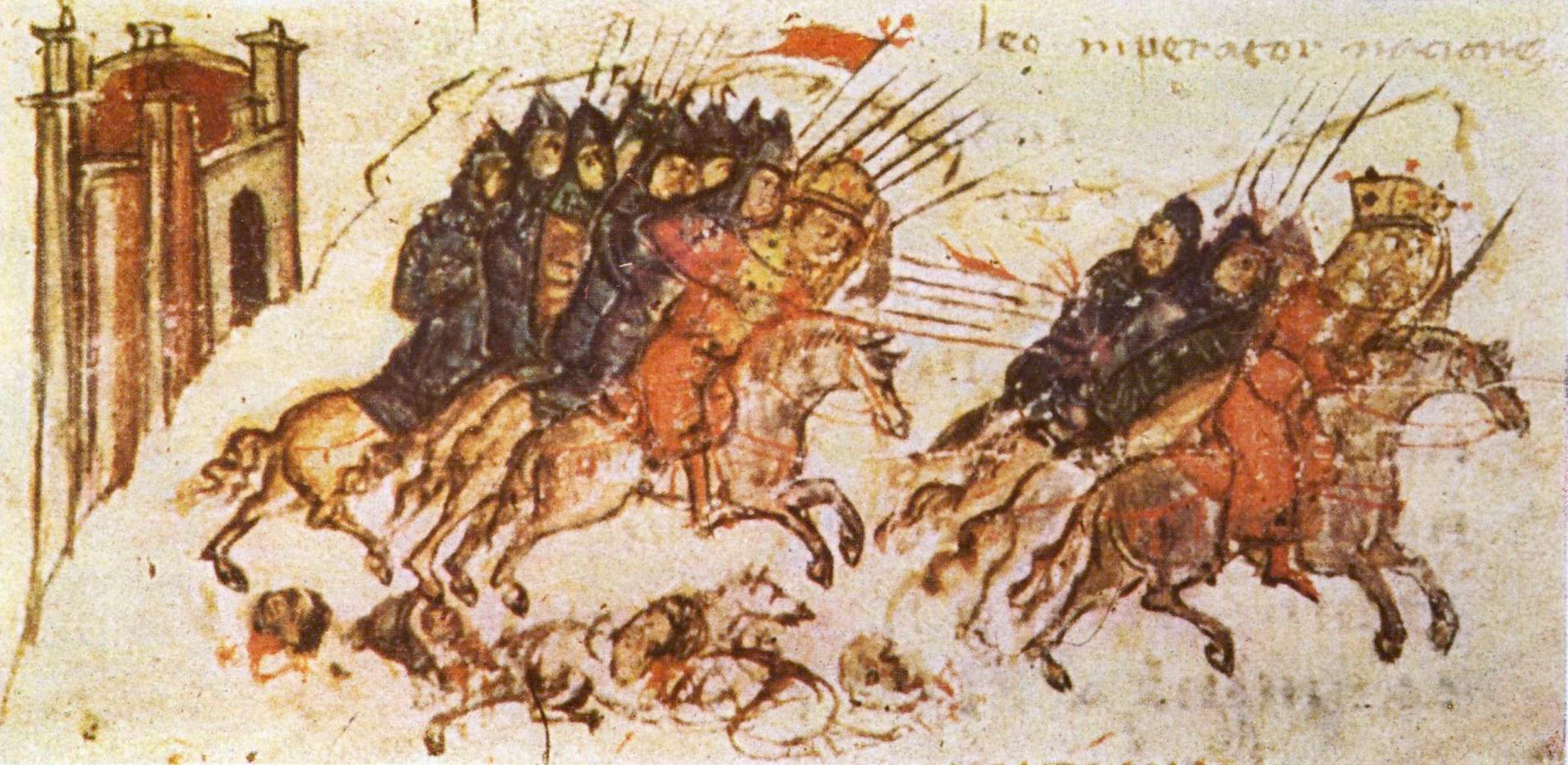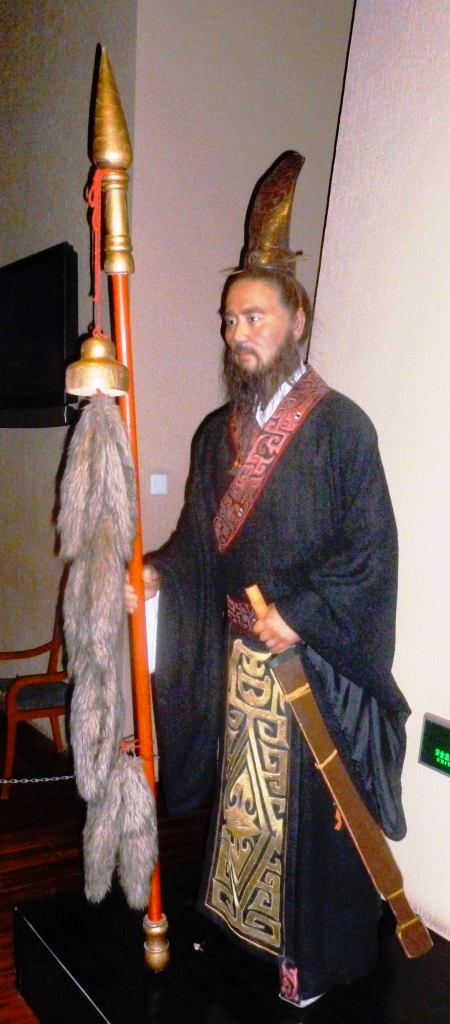|
Uokil
Uokil, or Vokil, was a name of Bulgar dynastic clan listed in the '' Nominalia of the Bulgarian khans''. The first listed in Nominalia was Kormisosh (r. 737–754) and the last was Umor (r. 766). Theories regarding origins Kazakhstanian Turkologist Yury Zuev had drawn attention to circumstantial evidence suggesting links between the Vokil and various Central Asian peoples, during antiquity and the early Middle Ages. The peoples concerned include: * the ''Hūjiē'' (呼揭) or ''Wūjiē'' (烏揭), whom Zuev believed to have been an offshoot of the Yuezhi or Wusun; * the ''Xījiē'' (奚結), a Tiele tribe. * the ''Augaloi'' of the Transoxiana region beyond the Oxus, among the Indo-European-speaking '' Tocharii''; However, such theories are controversial and cannot be all true. Conclusive evidence proving or disproving them has never been presented and there is no consensus amongst scholars on whether or not such links exist. Yuezhi and Wusun Yuezhi and Wusun are Chinese exo ... [...More Info...] [...Related Items...] OR: [Wikipedia] [Google] [Baidu] |
Bulgars
The Bulgars (also Bulghars, Bulgari, Bolgars, Bolghars, Bolgari, Proto-Bulgarians) were Turkic peoples, Turkic Nomad, semi-nomadic warrior tribes that flourished in the Pontic–Caspian steppe and the Volga region between the 5th and 7th centuries. They became known as Eurasian nomads, nomadic equestrians in the Volga-Ural region, but some researchers trace Bulgar ethnic roots to Central Asia. During their westward migration across the Eurasian Steppe, the Bulgar tribes absorbed other tribal groups and cultural influences in a process of ethnogenesis, including Iranian peoples, Iranic, Finno-Ugric peoples, Finno-Ugric, and Huns, Hunnic tribes. The Bulgars spoke a Turkic languages, Turkic language, the Bulgar language of the Oghur languages, Oghuric branch. They preserved the military titles, organization, and customs of Eurasian steppes as well as pagan shamanism and belief in the sky deity Tengri, Tangra. The Bulgars became semi-sedentary during the 7th century in the Pontic- ... [...More Info...] [...Related Items...] OR: [Wikipedia] [Google] [Baidu] |
Umor
Umor () was the ruler of Bulgaria in 766. According to the Namelist of Bulgarian Rulers, Umor reigned for only 40 days in 766 and belonged to the Ukil clan, which makes him a relative of the former rulers Vinekh and possibly Kormisosh. The Byzantine sources indicate that his predecessor Sabin entrusted Bulgaria to Umor, but give no details of his short reign or fate. Some scholars speculate that he was a champion of the peace party like his discredited predecessor, and that he may have likewise fled to the Byzantine Empire The Byzantine Empire, also known as the Eastern Roman Empire, was the continuation of the Roman Empire centred on Constantinople during late antiquity and the Middle Ages. Having survived History of the Roman Empire, the events that caused the .... The 17th century Volga Bulgar compilation '' Ja'far Tarikh'' (a work of disputed authenticity) represents Yumart (i.e., Umor) as the elderly father-in-law of the former ruler Teles (i.e., Telets). Acco ... [...More Info...] [...Related Items...] OR: [Wikipedia] [Google] [Baidu] |
Exonym
An endonym (also known as autonym ) is a common, name for a group of people, individual person, geographical place, language, or dialect, meaning that it is used inside a particular group or linguistic community to identify or designate themselves, their place of origin, or their language. An exonym (also known as xenonym ) is an established, ''non-native'' name for a group of people, individual person, geographical place, language, or dialect, meaning that it is used primarily outside the particular place inhabited by the group or linguistic community. Exonyms exist not only for historico-geographical reasons but also in consideration of difficulties when pronouncing foreign words, or from non-systematic attempts at transcribing into a different writing system. For instance, is the endonym for the country that is also known by the exonyms ''Germany'' and in English and Italian, respectively, and in Spanish and French, respectively, in Polish, and and in Finni ... [...More Info...] [...Related Items...] OR: [Wikipedia] [Google] [Baidu] |
Zhizhi Chanyu
Zhizhi or Chi-Chi (, from Old Chinese (58 BCE): *''tśit-kie'' < *''tit-ke'';Schuessler 2014, p. 277 died 36 BCE), also known as Jzh-jzh, was a of the at the time of the first Xiongnu , who held the north and west in contention with his younger brother Huhanye who held the south. His original name in Chinese transcription was Luandi Hutuwusi (), i.e. one of the Worthy Prince< ... [...More Info...] [...Related Items...] OR: [Wikipedia] [Google] [Baidu] |
Hanshu
The ''Book of Han'' is a history of China finished in 111 CE, covering the Western, or Former Han dynasty from the first emperor in 206 BCE to the fall of Wang Mang in 23 CE. The work was composed by Ban Gu (32–92 CE), an Eastern Han court official, with the help of his sister Ban Zhao, continuing the work of their father, Ban Biao. They modelled their work on the ''Records of the Grand Historian'' (), a cross-dynastic general history, but theirs was the first in this annals-biography form to cover a single dynasty. It is the best source, sometimes the only one, for many topics such as literature in this period. The ''Book of Han'' is also called the ''Book of the Former Han'' () to distinguish it from the '' Book of the Later Han'' () which covers the Eastern Han period (25–220 CE), and was composed in the fifth century by Fan Ye (398–445 CE). Contents This history developed from a continuation of Sima Qian's ''Records of the Grand His ... [...More Info...] [...Related Items...] OR: [Wikipedia] [Google] [Baidu] |
Sogdia
Sogdia () or Sogdiana was an ancient Iranian peoples, Iranian civilization between the Amu Darya and the Syr Darya, and in present-day Uzbekistan, Turkmenistan, Tajikistan, Kazakhstan, and Kyrgyzstan. Sogdiana was also a province of the Achaemenid Empire, and listed on the Behistun Inscription of Darius the Great. Sogdiana was first conquered by Cyrus the Great, the founder of the Achaemenid Empire, and then was annexed by the Macedonian ruler Alexander the Great in 328 BC. It would continue to change hands under the Seleucid Empire, the Greco-Bactrian Kingdom, the Kushan Empire, the Sasanian Empire, the Hephthalite Empire, the Western Turkic Khaganate, and the Muslim conquest of Transoxiana. The Sogdian city-states, although never politically united, were centered on the city of Samarkand. Sogdian language, Sogdian, an Eastern Iranian language, is no longer spoken. However, a descendant of one of its dialects, Yaghnobi language, Yaghnobi, is still spoken by the Yaghnobis of Taji ... [...More Info...] [...Related Items...] OR: [Wikipedia] [Google] [Baidu] |
Ili River
The Ili River (, , ; ; ; zh, 伊犁河, ; , ; , ) is a river in Northwest China and Southeastern Kazakhstan. It flows from the Ili Kazakh Autonomous Prefecture of the Xinjiang Uighur Autonomous Region to the Almaty Region in Kazakhstan. It is long (including its source river the Tekes),Или of which is in Kazakhstan. The river originates from the Tekes and Künes rivers in Eastern . The Ili drains the basin between the Tian Shan and the [...More Info...] [...Related Items...] OR: [Wikipedia] [Google] [Baidu] |
Zhang Qian
Zhang Qian (; died c. 114 BC) was a Chinese diplomat, explorer, and politician who served as an imperial envoy to the world outside of China in the late 2nd century BC during the Western Han dynasty. He was one of the first official diplomats to bring back valuable information about Central Asia, including the Greco-Bactrian remains of the Macedonian Empire as well as the Parthian Empire, to the Han dynasty imperial court, then ruled by Emperor Wu of Han. He played an important pioneering role for the future Chinese conquest of lands west of Xinjiang, including swaths of Central Asia and even lands south of the Hindu Kush (see Protectorate of the Western Regions). This trip created the Silk Road that marked the beginning of globalization between the countries in the east and west. Zhang Qian's travel was commissioned by Emperor Wu with the major goal of initiating transcontinental trade in the Silk Road, as well as create political protectorates by securing allies. His mi ... [...More Info...] [...Related Items...] OR: [Wikipedia] [Google] [Baidu] |
Göktürks
The Göktürks (; ), also known as Türks, Celestial Turks or Blue Turks, were a Turkic people in medieval Inner Asia. The Göktürks, under the leadership of Bumin Qaghan (d. 552) and his sons, succeeded the Rouran Khaganate as the main power in the region and established the First Turkic Khaganate, one of several nomadic dynasties that would shape the future geolocation, culture, and dominant beliefs of Turkic peoples. Etymology Origin As an ethnonym, the etymology of ''Turk'' is still unknown. It is generally believed that the name ''Türk'' may have come from Old Turkic migration-term , which means 'created, born'. As a word in Turkic languages, ''Turk'' may mean "strong, strength, ripe" or "flourishing, in full strength". It may also mean ripe as for a fruit or "in the prime of life, young, and vigorous" for a person. The name ''Gök-türk'' emerged from the Modern Turkish reading of the word ''Kök'' as ''Gök'' with assumption of equivalence to "sky" in Moder ... [...More Info...] [...Related Items...] OR: [Wikipedia] [Google] [Baidu] |
Ashina Tribe
Ashina may refer to: * Ashina tribe, a ruling dynasty of the Turkic Khaganate * Ashina clan (Japan), one of the Japanese clans * Ashina District, Hiroshima, a former Japanese district * Empress Ashina (551–582), empress of the Chinese/Xianbei dynasty Northern Zhou * Sei Ashina (1983–2020), Japanese actress *Main setting of '' Sekiro: Shadows Die Twice'' See also * Asena, a mythical female wolf found in old Turkic mythology * Ashna (other) {{disambig, surname ... [...More Info...] [...Related Items...] OR: [Wikipedia] [Google] [Baidu] |
Modu Chanyu
Modu () was the son of Touman and the founder of the empire of the Xiongnu. He came to power by ordering his men to kill his father in 209 BCE. Modu ruled from 209 to 174 BCE. He was a military leader under his father Touman and later ''chanyu'' of the Xiongnu Empire, based on the Mongolian Plateau. He secured the throne and established a powerful Xiongnu Empire by successfully unifying the tribes of the Mongolian–Manchurian grassland in response to the loss of Xiongnu pasture lands to invading Qin forces commanded by Meng Tian in 215 BCE. While Modu rode and then furthered the wave of militarization and effectively centralized Xiongnu power, the Qin quickly fell into disarray with the death of the first emperor in 210 BCE, leaving Modu a free hand to expand his empire into one of the largest of his time. The eastern border stretched as far as the Liao River, the western borders of the empire reached the Pamir Mountains, whilst the northern border reached Lake Baikal. ... [...More Info...] [...Related Items...] OR: [Wikipedia] [Google] [Baidu] |
Huns
The Huns were a nomadic people who lived in Central Asia, the Caucasus, and Eastern Europe between the 4th and 6th centuries AD. According to European tradition, they were first reported living east of the Volga River, in an area that was part of Scythia at the time. By 370 AD, the Huns had arrived on the Volga, causing the westwards movement of Goths and Alans. By 430, they had established a vast, but short-lived, empire on the Danubian frontier of the Roman empire in Europe. Either under Hunnic hegemony, or fleeing from it, several central and eastern European peoples established kingdoms in the region, including not only Goths and Alans, but also Vandals, Gepids, Heruli, Suebians and Rugians. The Huns, especially under their King Attila, made frequent and devastating raids into the Eastern Roman Empire. In 451, they invaded the Western Roman province of Gaul, where they fought a combined army of Romans and Visigoths at the Battle of the Catalaunian Fields, and in 452, they ... [...More Info...] [...Related Items...] OR: [Wikipedia] [Google] [Baidu] |







